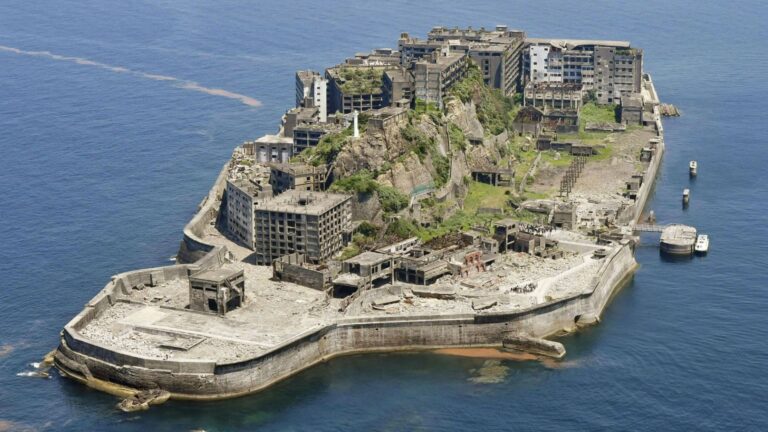
[ad_1]
A TINY island off the coast of Japan, shaped like a battleship and left abandoned for decades, was a living “hell” for its former residents.
Thousands of Korean and Chinese prisoners were forced to work on Hashima from 1930 to just after WWII – and some never escaped.
6

6

Hashima Island, otherwise known as “Gunkanjima” or “Battleship Island”, is the most famous of Nagasaki’s 505 uninhabited islands.
Discovered in 1887, it served as an important coal mine from the time it was purchased by Mitsubishi in 1890.
Towering concrete buildings were erected – the first in 1916 – by Korean and Chinese prisoners who faced gruelling conditions.
Up to 1,300 conscripted labourers died on Hashima of dangers including underground accidents, exhaustion, and malnutrition.
Those who survived later shared that they referred to the island not as Hashima, or “Battleship Island”, but as “Jail Island” or “Hell Island”.
Following the war, many Japanese people relocated to the island to work there themselves – and had just 5ft of living space each.
An astonishing 5,300 people crammed into the 480-metre-by-160-metre space at its peak, when it was a hub of national coal mining, along with a hospital, schools, shops, and even a temple and a shrine.
But the mines soon ran out of coal and were closed about 1974, leaving Hashima abandoned for 40 years to be reclaimed by nature.
The concrete buildings, previously thought to be strong enough to protect the island’s residents from the numerous typhoons which hit Hashima every year, began to fall apart.
Perhaps drawn to the island by its dark history, some people camped there despite the dangers.
The island was owned by Mitsubishi until 2002.
It then went under the ownership of Nagasaki City – which was absorbed into Takashima Town in 2005.
The island made for the perfect lair of a James Bond villain in the iconic 2012 film Skyfall.
The government eventually chose to open the site to the public, also propping up or replace walls that were on the verge of collapsing, in an attempt to discourage people from going there themselves and potentially getting hurt.
In 2015, Hashima was approved for inclusion on the UNESCO World Heritage Site list; the eerie island today resembling a concrete jungle of deserted high-rises, surrounded by a massive seawall.
Japan acknowledged the survivors of forced labour who inhabited the island, stating: “there were a large number of Koreans and others who were brought against their will and forced to work under harsh conditions in the 1940s” at Hashima Island.

6

6

6

6
[ad_2]
